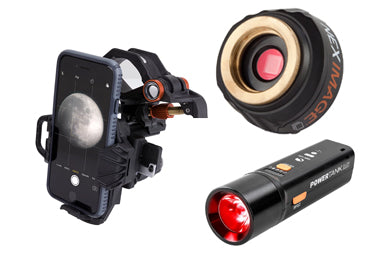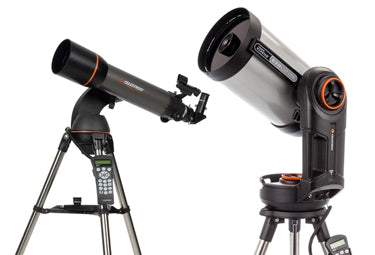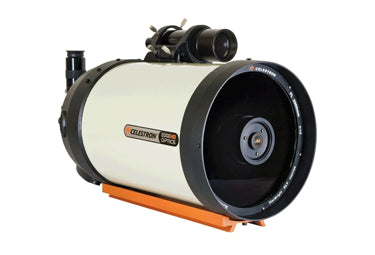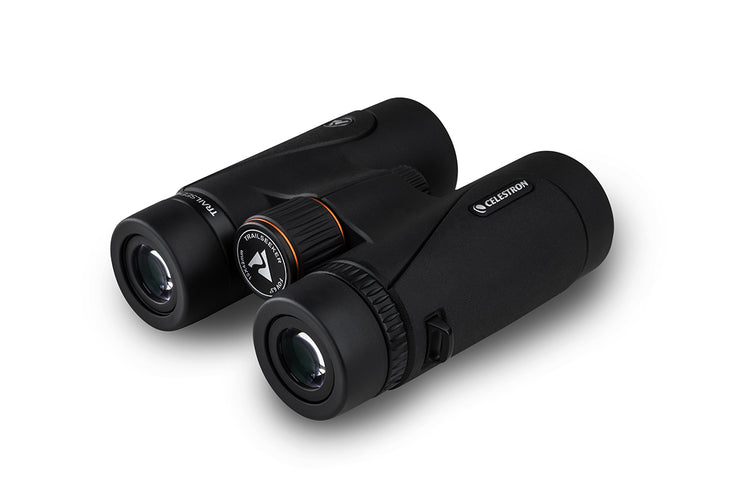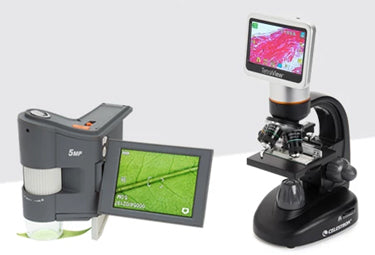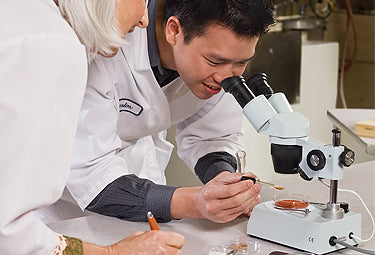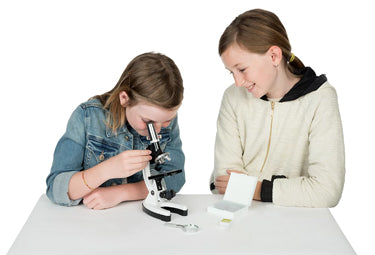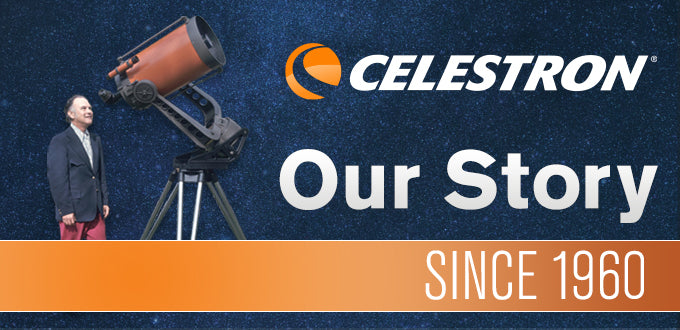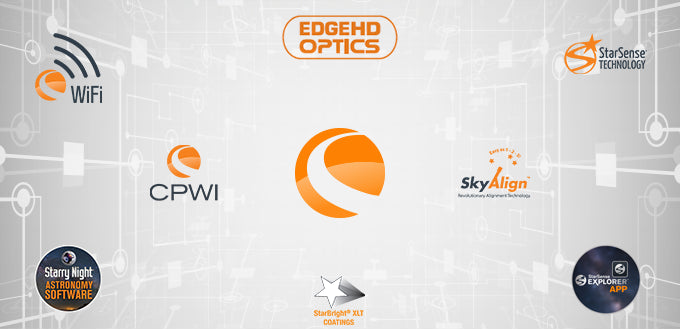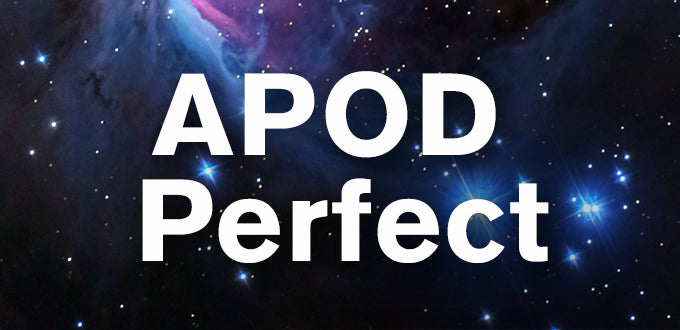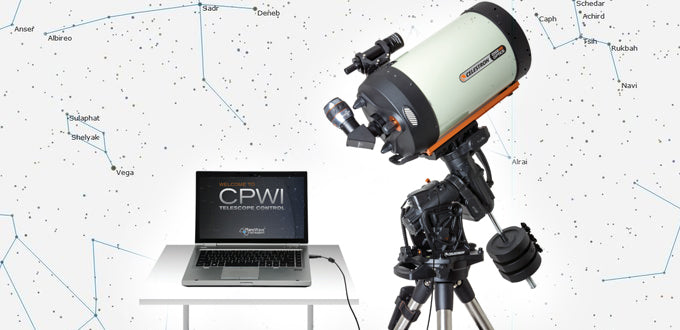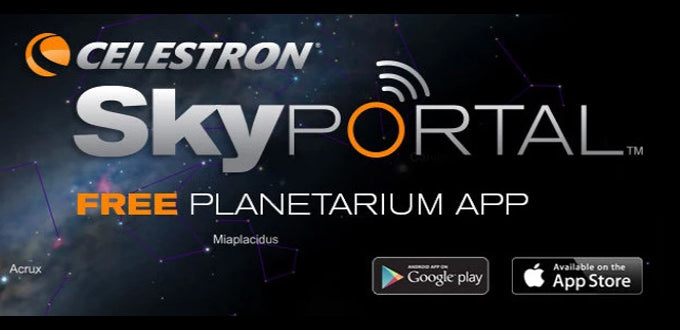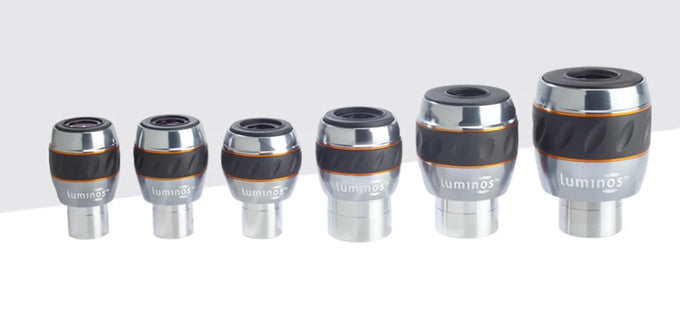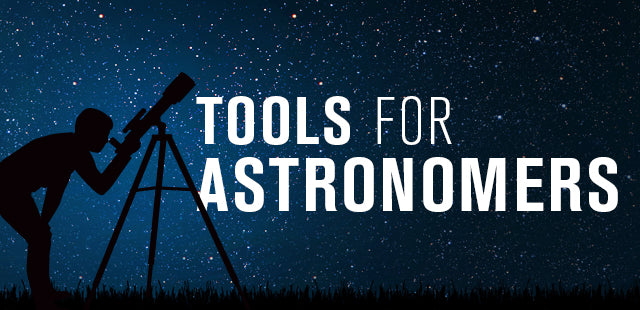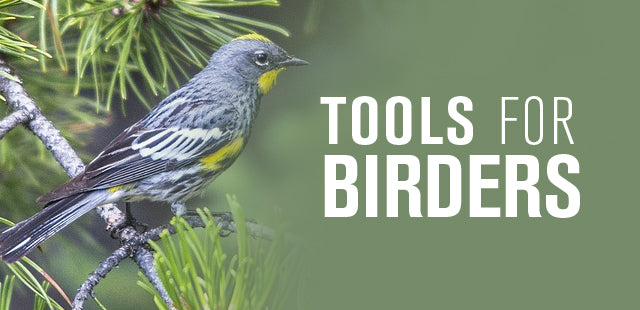How do you Polar Align using a Fork-Mounted Scope with a Wedge?
September 18, 2018

Your Fork-mounted scope can accurately track objects when used in its Alt-Az position. However, if you intend to do long exposure astroimaging, you will need to convert your alt-azimuth telescope to an equatorial mount by adding a wedge between the base of the mount and the tripod. This eliminates the field rotation that would otherwise ruin your astroimages.
To Polar Align your computerized Alt-AZ mount, your mount needs to support a wedge (HD wedge pro or NexStar Wedge); telescopes like the CPC GPS XLT, CPC Deluxe HD, NexStar SE 6&8, and NexStar Evolution series. Click here for instructions on how to align your Alt-Az with a wedge.
To Polar Align using a Computerized EQ mount, click here. To Polar Align using a Manual EQ mount, click here.
Once you have a wedge on your scope, there are 4 steps to polar aligning your scope.
Steps:
- Rough Align
- EQ North Align
- Polar Alignment
- EQ North Align #2 (optional)
* NOTE: In the Southern Hemisphere, substitute EQ South Align for EQ North Align.
Rough Align
- Attach the wedge to the tripod and secure the mount and optical tube to the wedge
- Orient your telescope so the polar axis is roughly north (facing Polaris), use compass if needed or Southern Hemisphere, face your telescope setup and wedge south or Sigma Octantis.

- Roughly polar align the wedge using the hex bolts to be within 5 degrees.

NOTE: Move the knobs slowly so you can see the change in your eyepiece. Also, just in case you are rotating the wrong way, you can correct easily.
EQ North Align
Align your mount using EQ North (or South) align and follow the onscreen instructions on the hand control. Instructions here.
Polar Alignment
- On your hand control, click Align and follow the instructions provided.
- Once you click the align button, select Polar Align

- Under the Polar align, select Align mount

- Your mount will slew to a star and it will ask you to center the star in your eyepiece. Once you have centered the star, push enter.

- The scope will slew to the position where the star would be if it were accurately polar aligned. Your hand controller will ask you to move your wedge’s altitude and azimuth to place the star in the center of the eyepiece and press Enter.


NOTE: Move the knobs slowly so you can see the change in your eyepiece. Also, just in case you are rotating the wrong way, you can auto correct easily.
- Once you click the align button, select Polar Align
- To check your polar alignment, click Align on your hand controller and click Display Align. The below screen will pop up. You want to get your numbers as close to 0 as possible. Anything around 10 arc minutes or less is ok. If you’re polar alignment numbers are a little higher than you’d like, you can repeat the alignment, then redo the polar alignment. Each iteration you do should get you closer to the celestial pole. Once your numbers are below 10 arc minutes in each axis, you will be close enough for longer exposures.

EQ North Align #2 (Optional)
To improve your pointing accuracy and make sure you are 100% on point, you will need to do an EQ North align again. The mount will retain its alignment; however, accuracy may have been compromised depending on how much the mount has been moved during polar alignment. Although the telescope’s tracking may be very good, pointing accuracy may need improvement, especially if you are trying to locate small objects on a CCD chip. This is recommend for (serious) astrophotographers.
NOTE: The above is for the Fork arm mounts with the v4.0 or higher flashable hand control firmware or Nexstar+ hand control. The older Alt/Azm telescopes (those with v2.2 or older hand controls and those without versions for the hand control) have the North and Level method programmed in the firmware. These scopes will align to magnetic north and level when initializing during the Alt-Az alignment process. Using older instruments on a wedge using GPS data, orient the tube so that the Celestron logo on the base is to the north at bottom and the tube is pointed downwards into the base of the fork. When EQ North Align is chosen and Enter pressed, the GPS will move to a position pointing approximately at the celestial equator on the meridian. When the GPS is off with these older telescopes, use the same procedure for the GPS with v4.0 or later hand controls.

